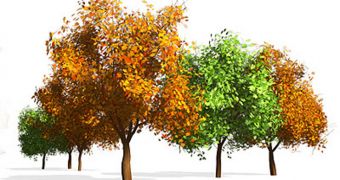Scientists have sought for a long time a potential solution to a very disturbing problem for the game industry, namely how to ensure that the most accurate environment is portrayed in computer games. At this point, animators have two options in this regard, to either create a static background, or proceed to model each individual tree in a forest, to give just an example. But researchers at the University of Bath have recently developed a new method that allows for complex simulations to be automatically generated by a computer.
According to AlphaGalileo, all the machine needs to have before being able to render a complex landscape is a video of the said landscape. Such an invention would undoubtedly help computer animators and video-game designers create scenery elements that no longer look like they were dropped in the frame by mistake, such as it is often the case in animation movies or video games. Trees, for instance, could look just like the real deal, and act like it too, the Bath team says.
UB Department of Computer Science experts Dr. Peter Hall and Chris Li have developed the new computer program, which enables a computer to essentially “see” what it needs to model. The software makes it easier for the machine to comprehend what it needs to simulate, by allowing it to look and analyze the way branches are moving in the wind, and other such features. But what is really intriguing is that, once the computer watches enough footage, the same software allows it to draw and simulate many more trees, but each of them is slightly different from the other one.
“Rendering trees has always been a headache for animators. Trees move in irregular ways, and it’s very hard to achieve natural-looking movement. It is so expensive that traditional animation often uses static trees – except in big-budget films. In computer graphics, tree models are just as hard to produce. With our system, the user can produce new trees of the same variety, with each one an individual. We can also very finely control the movement of the tree for different weather conditions, different seasons, and can even make it dance to music!” Hall says.
“Our system will make it faster and cheaper for animators to create animated backgrounds. In the future we want to use this same technique to animate other objects like clouds, water, fire and smoke,” Li adds. The project, which was funded by the Engineering & Physical Sciences Research Council (EPSRC), has already received a lot of attention from the entertainment industry, which is always interested in the most recent innovations when it comes to animation.

 14 DAY TRIAL //
14 DAY TRIAL // 
